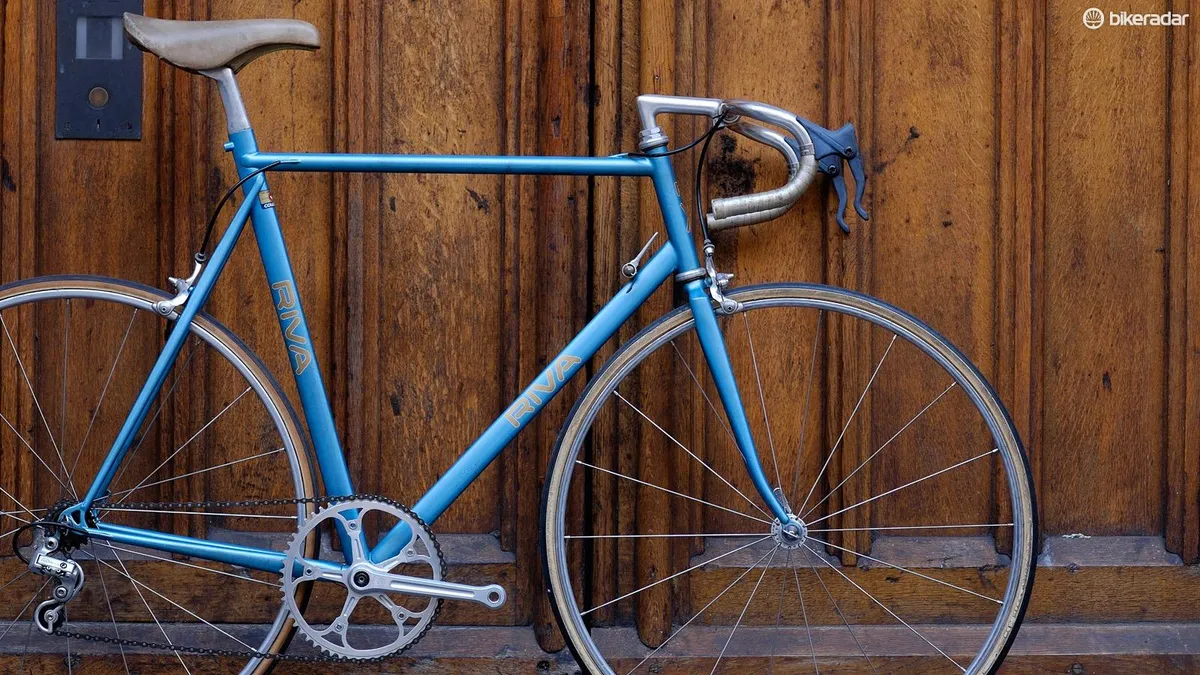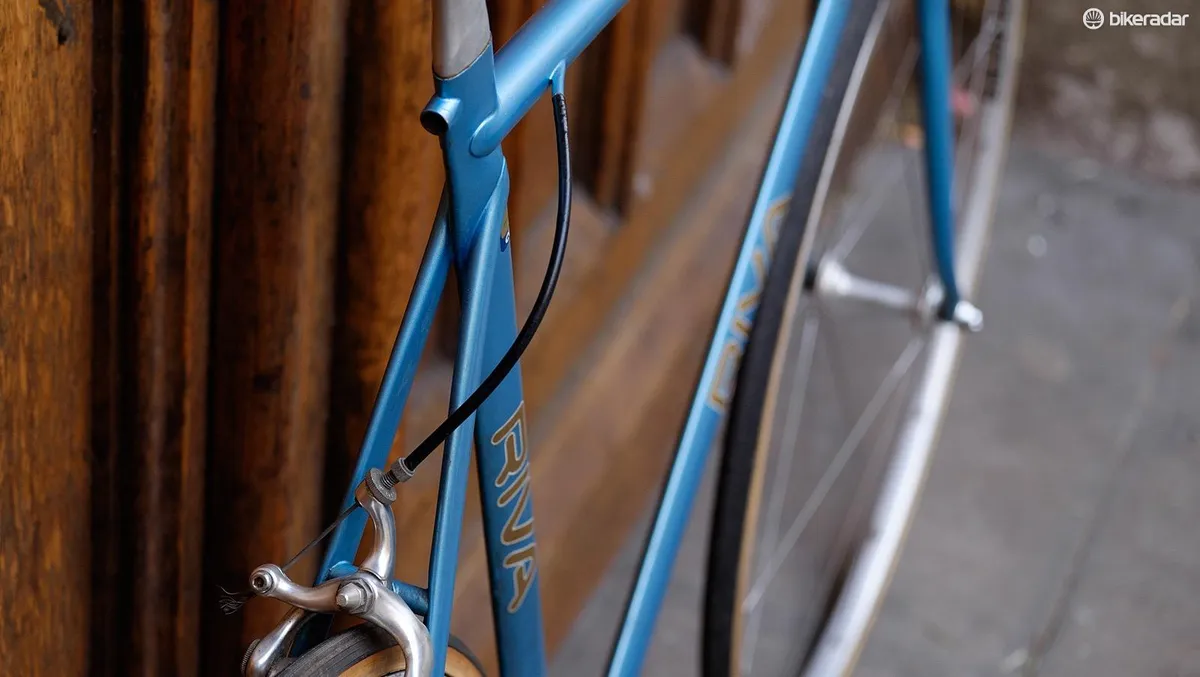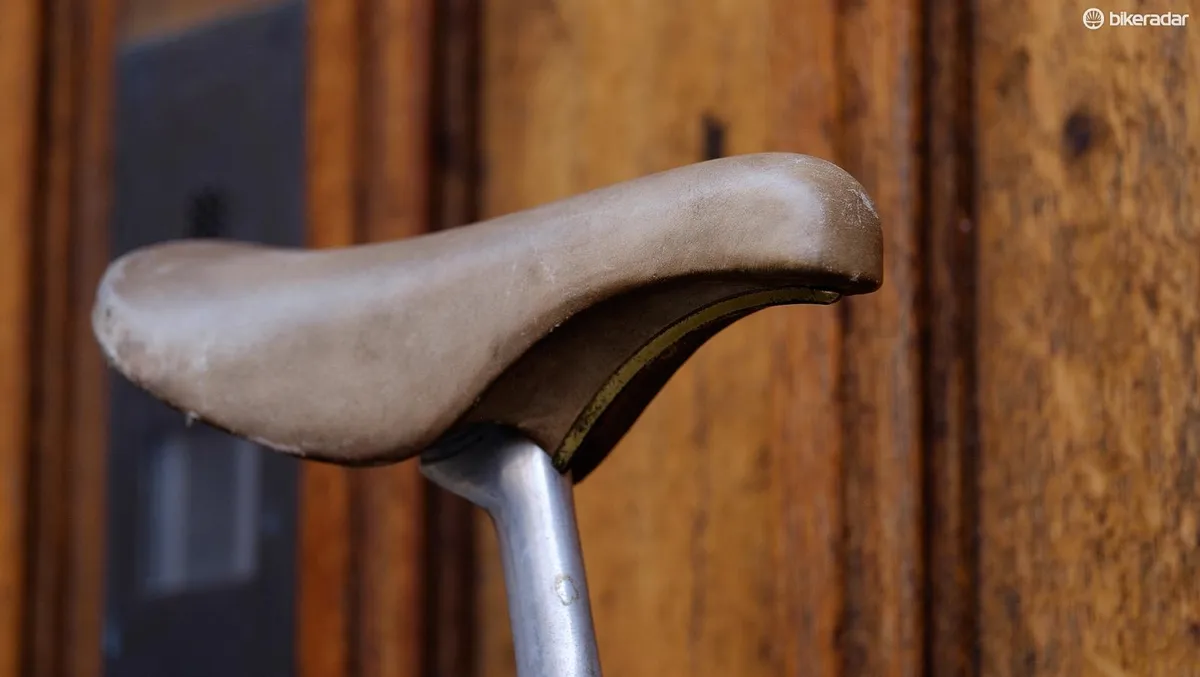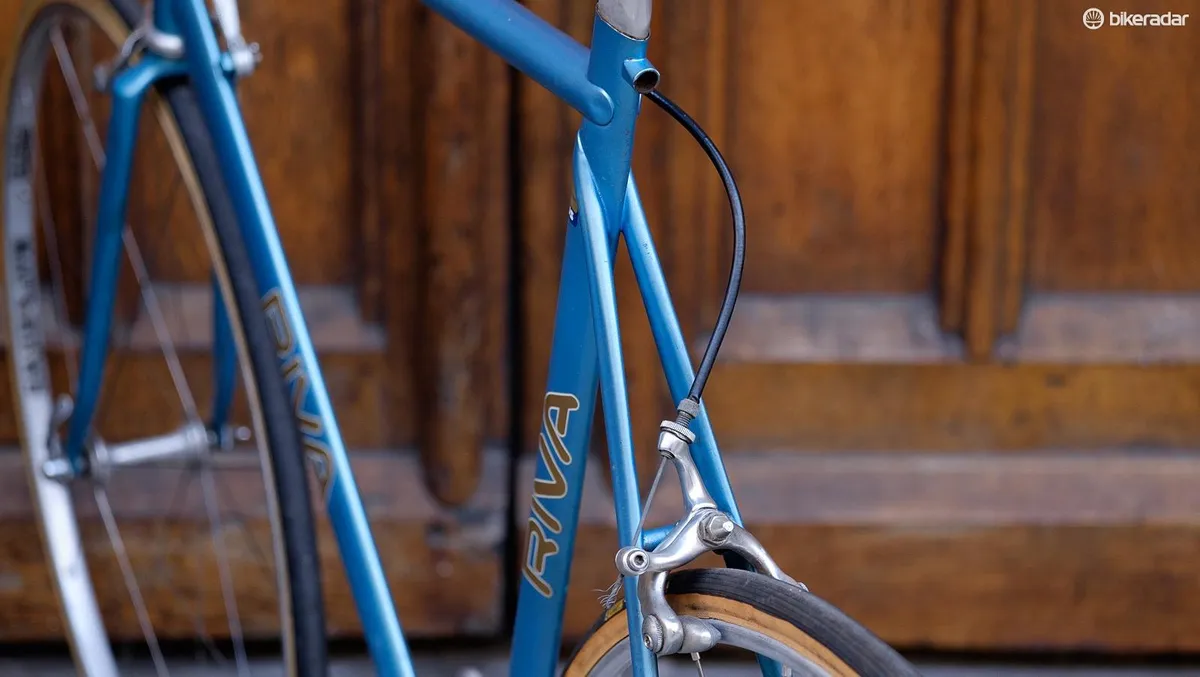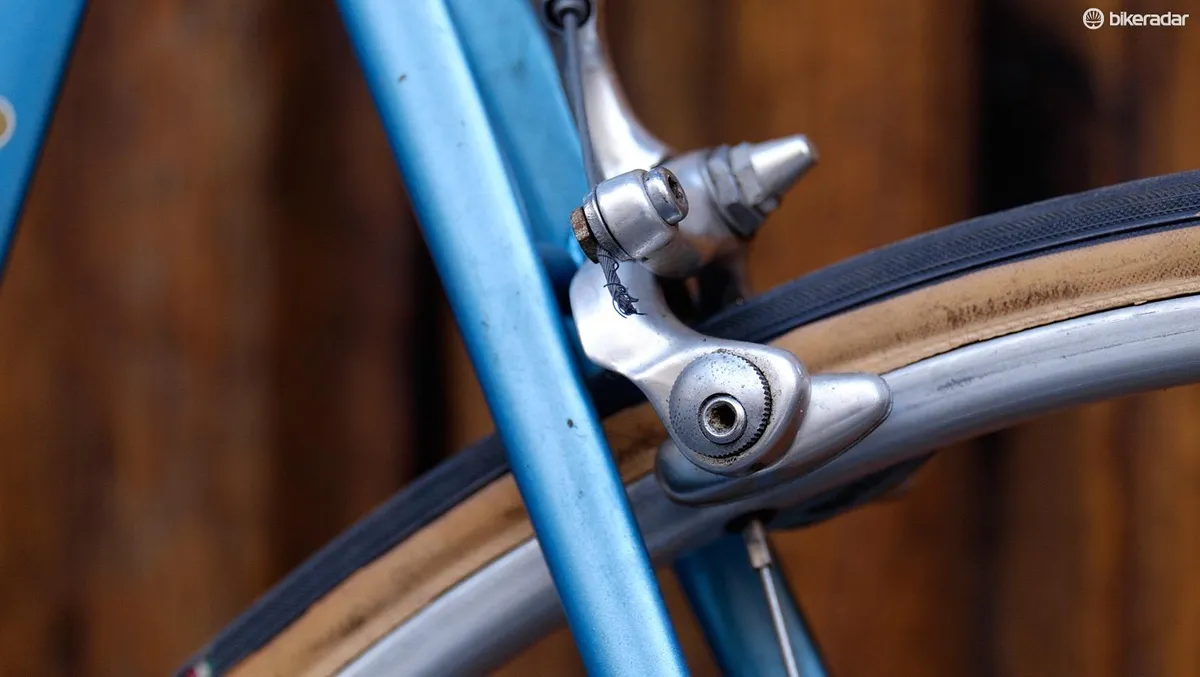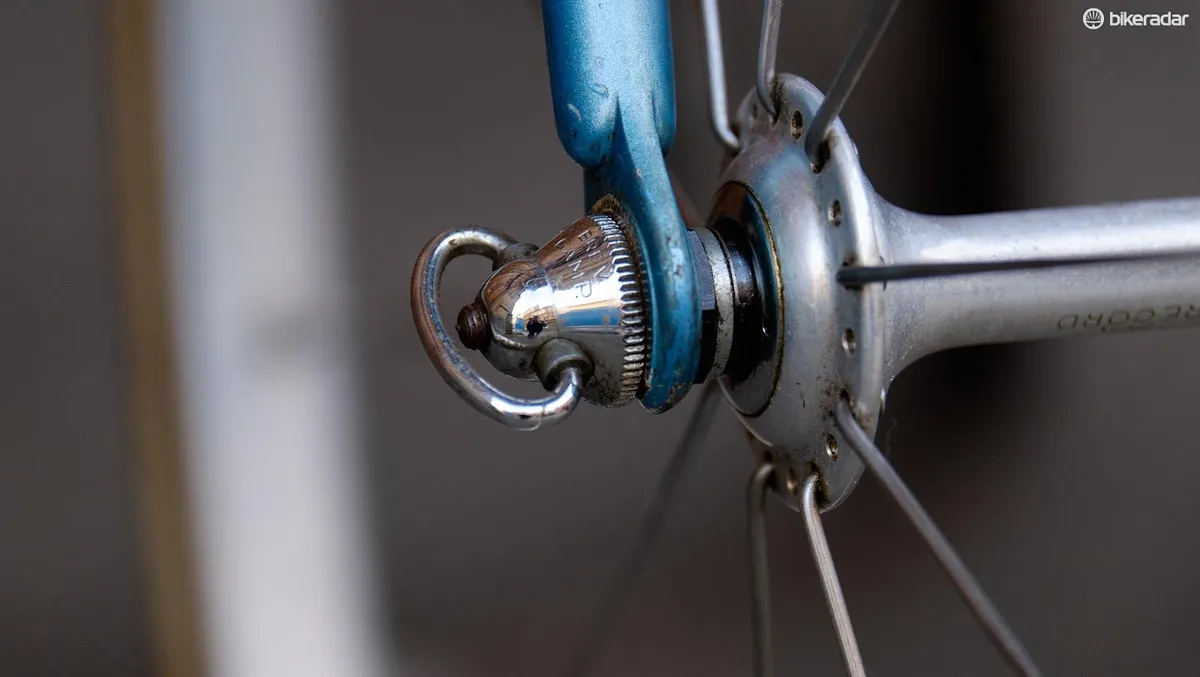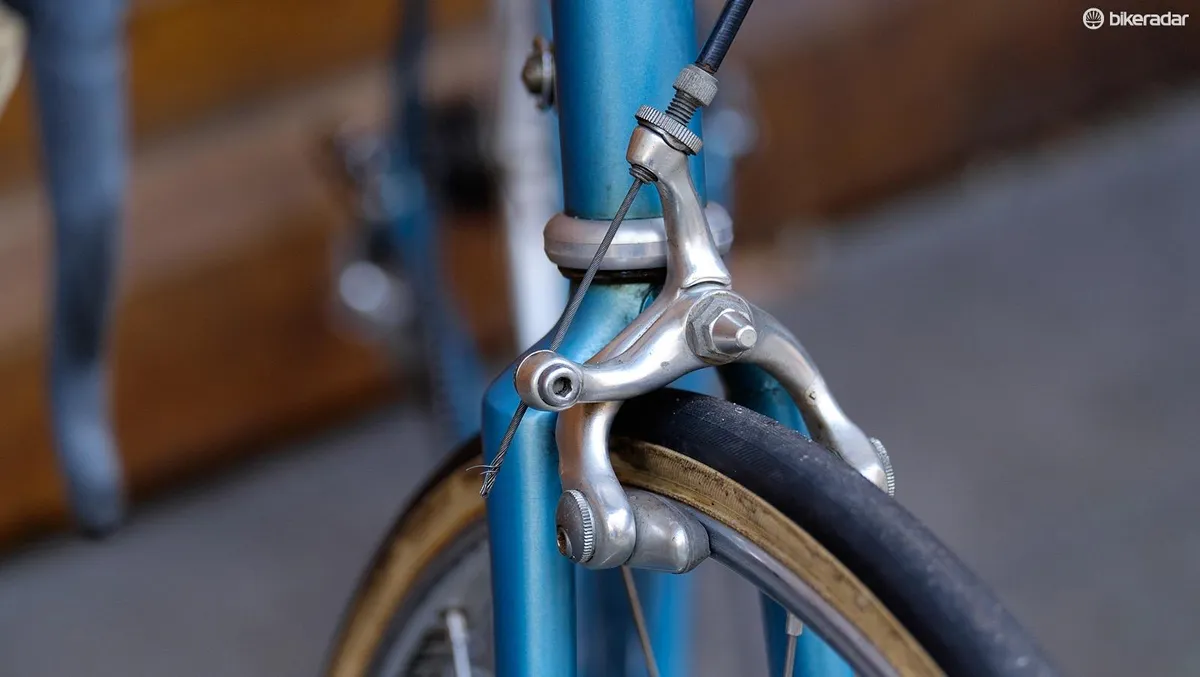I’ve owned, worked on and generally obsessed about retro bikes for many years now, but this custom Riva time trial bike is without doubt one of the most beautiful I’ve ever come across.
- Retro bike tech — our favourite bikes and kit from yesteryear
- Throwback Thursday: 1988 Schwinn Paramount
Who was Riva?
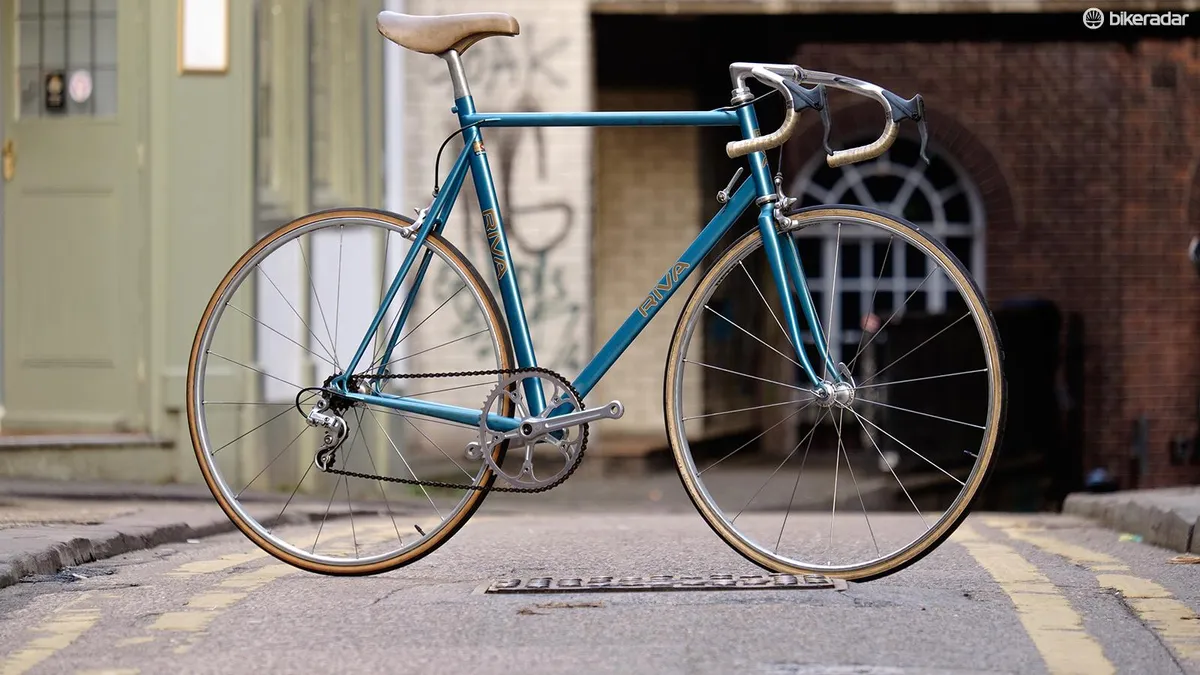
There’s next to no information on Riva bikes available online, but as far as I’ve been able to ascertain, it was a small British custom workshop that produced a wide variety of different sorts of bikes.
The only other two bikes I’ve been able to find online are this mixte frame in the same shade of blue as this time trial bike and this very cool track bike.
It’s pretty hard to put an exact date on the bike (there were no stampings on the bottom bracket shell or elsewhere), but judging by the components, I’d hazard a guess and say it’s likely from the early to mid-eighties. Any further help identifying it from you guys would be greatly appreciated!
Flawless integration
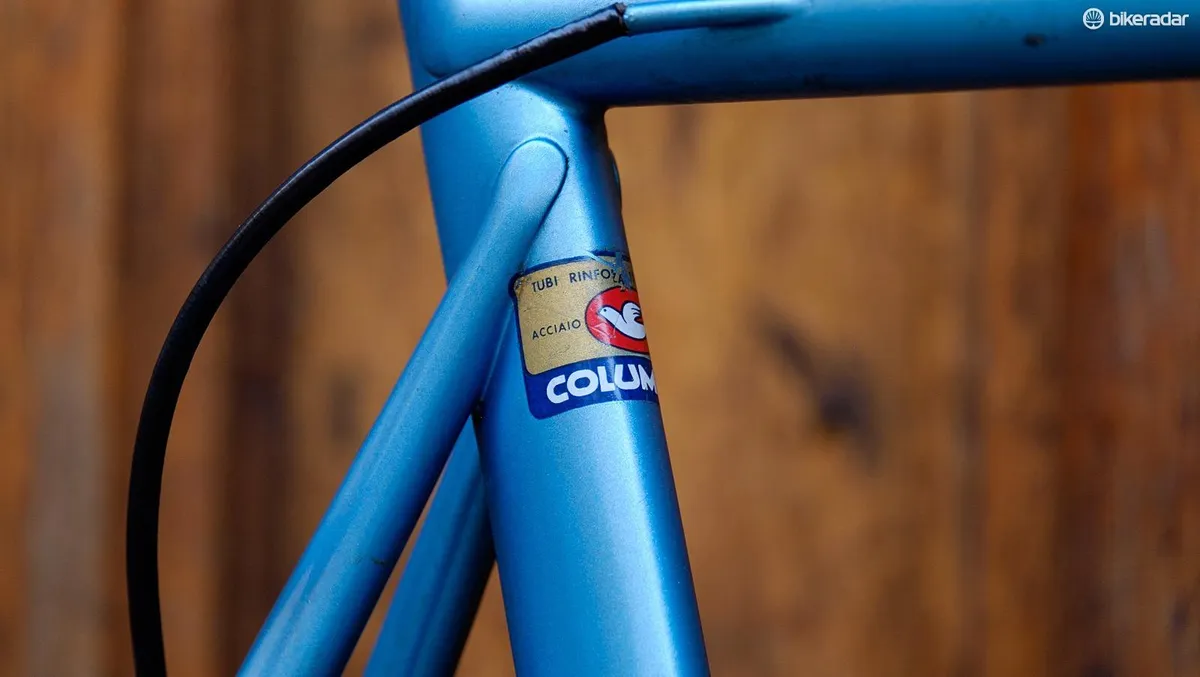
As far as I’ve been able to ascertain, the bike is made from Columbus Air tubing. This teardrop profiled steel tubeset signalled the start of the aero-conscious era and frames made from the stuff still command a serious premium on eBay.
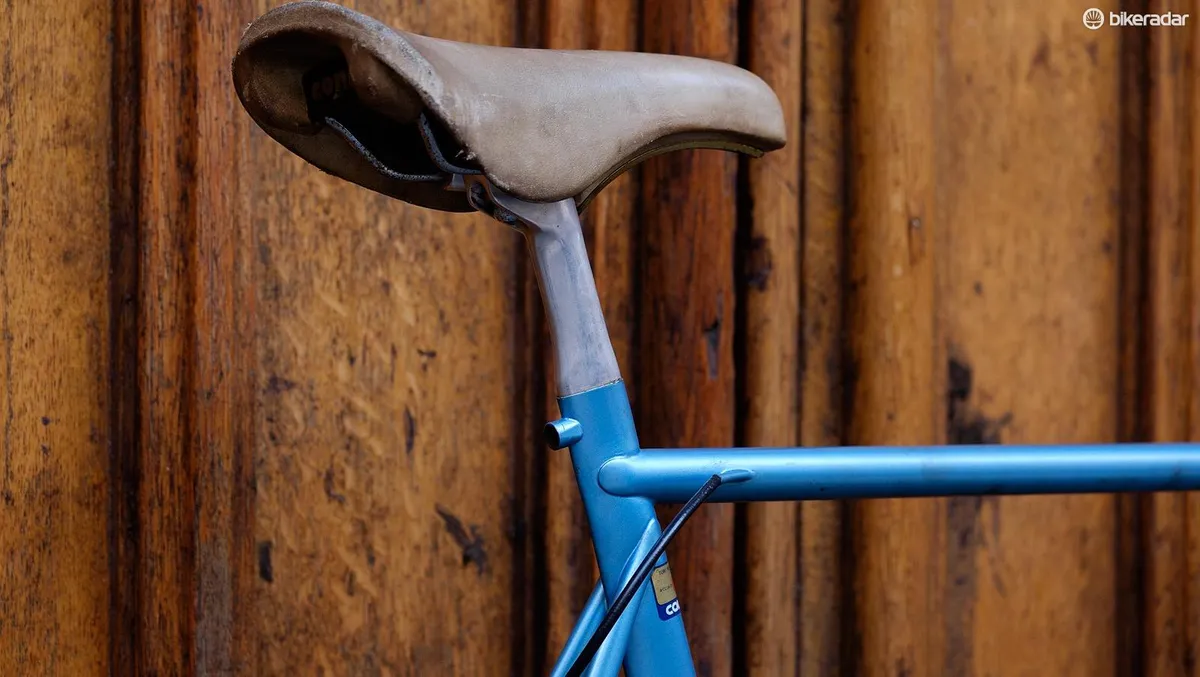
The highlight of any steel bike is the seat cluster, and this Riva is no exception — the skinny top tube has been masterfully mitred to gently hug the profile of the teardrop shaped seat tube. An integrated seat clamp on the backside of the seat tube and the wraparound seatstays cap the seat cluster off.
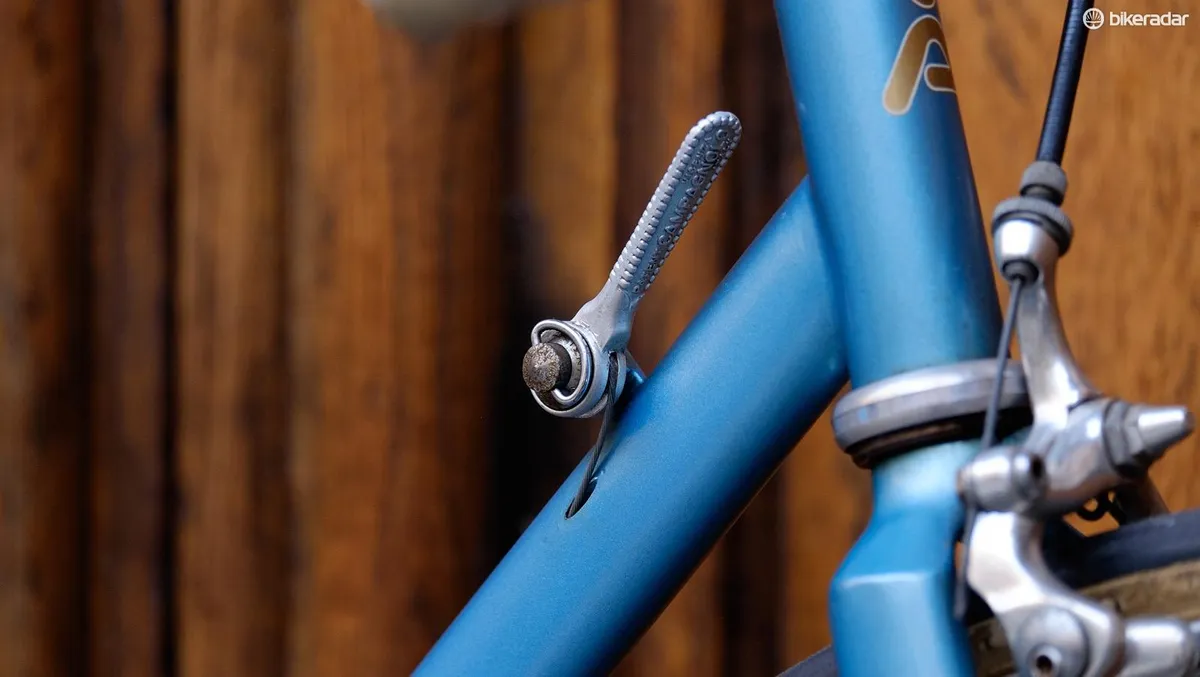
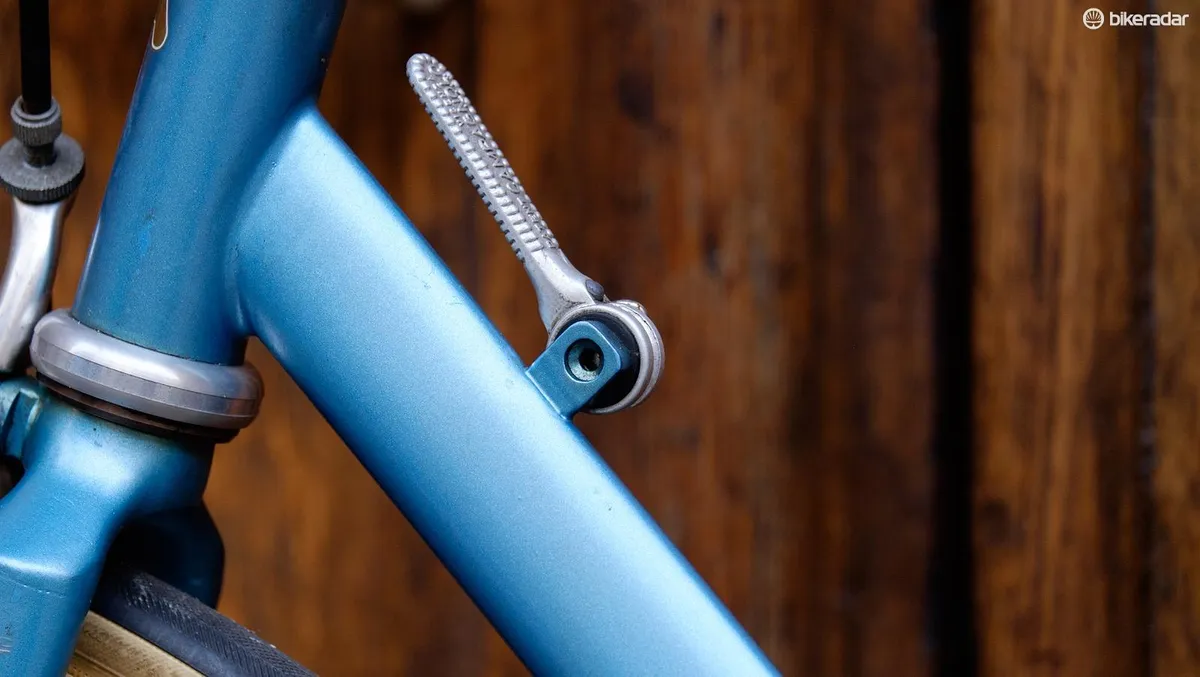
Unlike the more common braze-on shifter mounts that are usually on the side of the down tube, the single Campagnolo Record shifter — 1x is not such a new idea after all — is fitted to a plate that is brazed to the top of the down tube. The gear cable is then internally routed from just below this, eventually exiting in front of the bracket shell before re-entering the chainstay.
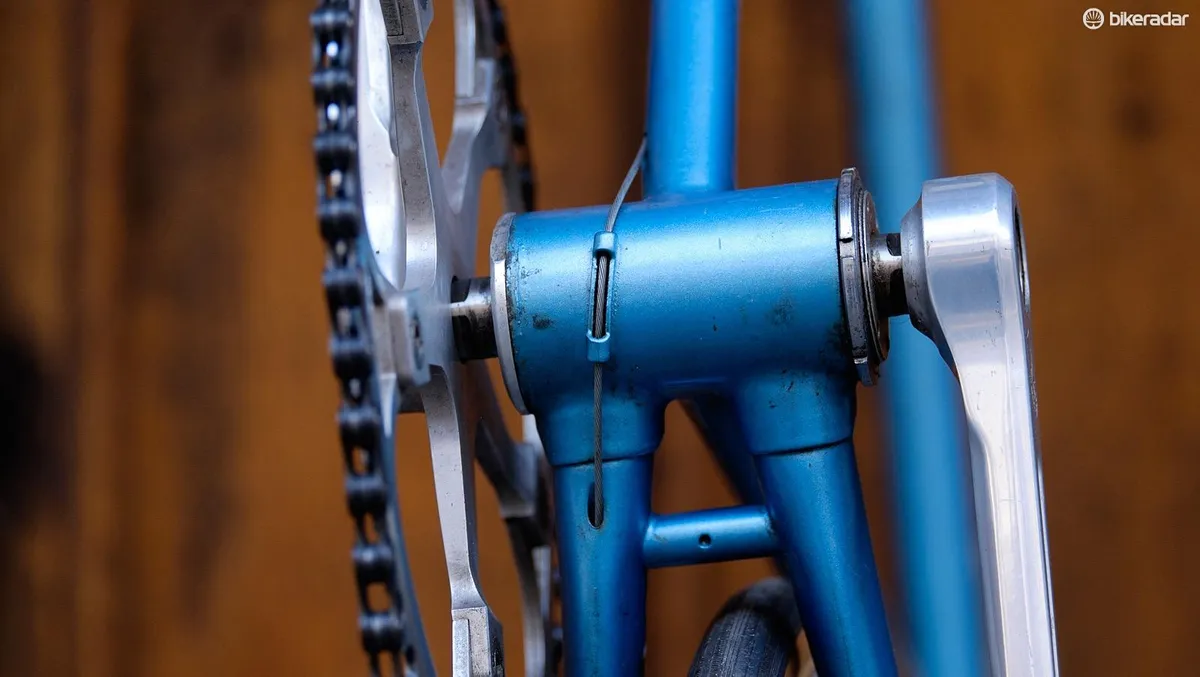
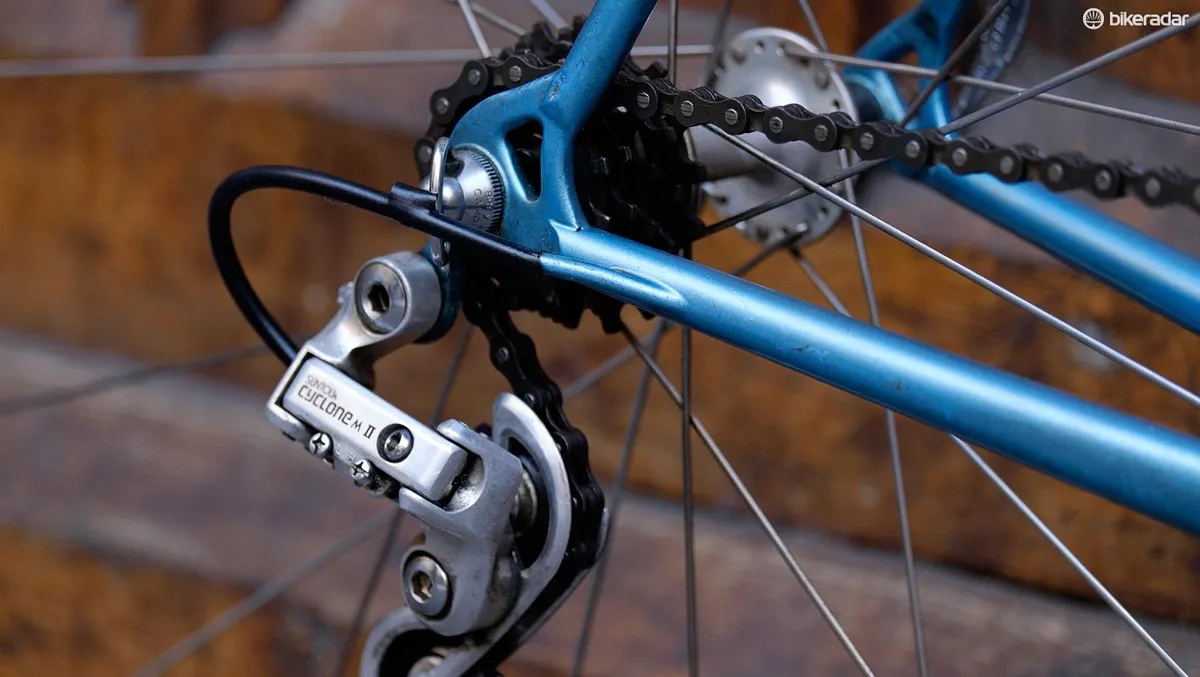
The finishing around these ports is absolutely flawless and you can tell a great deal of loving work went into making them.
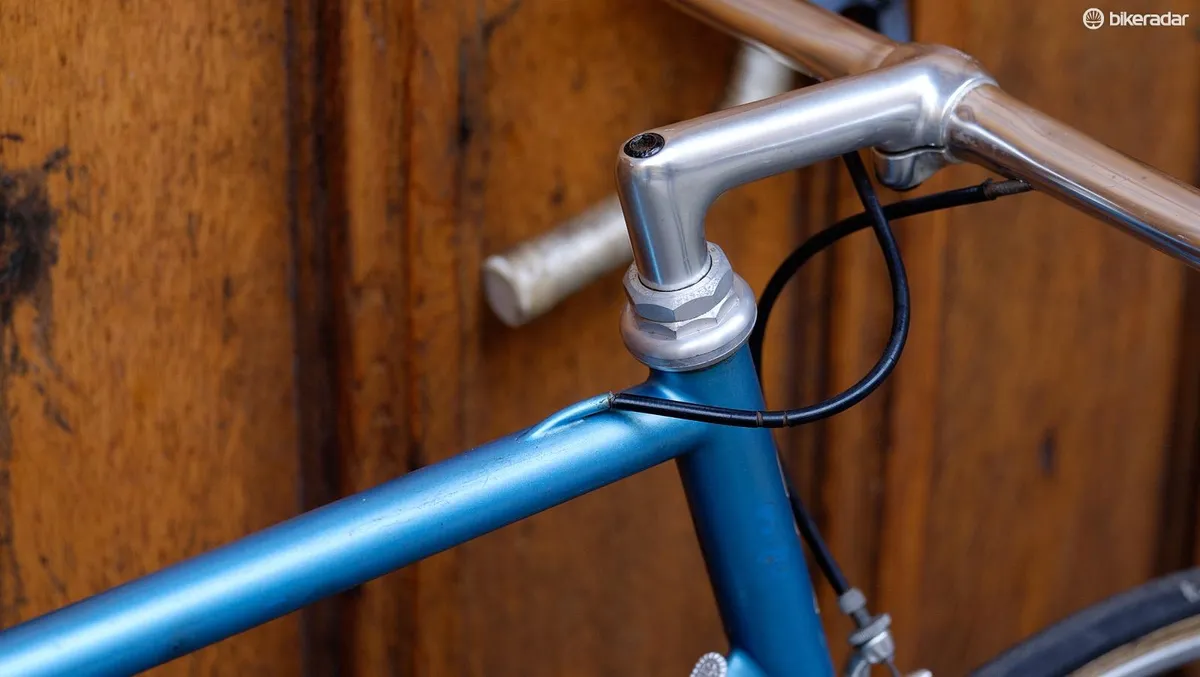
The rear brake cable gets a similar treatment, with the internal housing that’s brazed into the top tube shaped and cut to just the right length such that there are no kinks or tight bends in the cables.
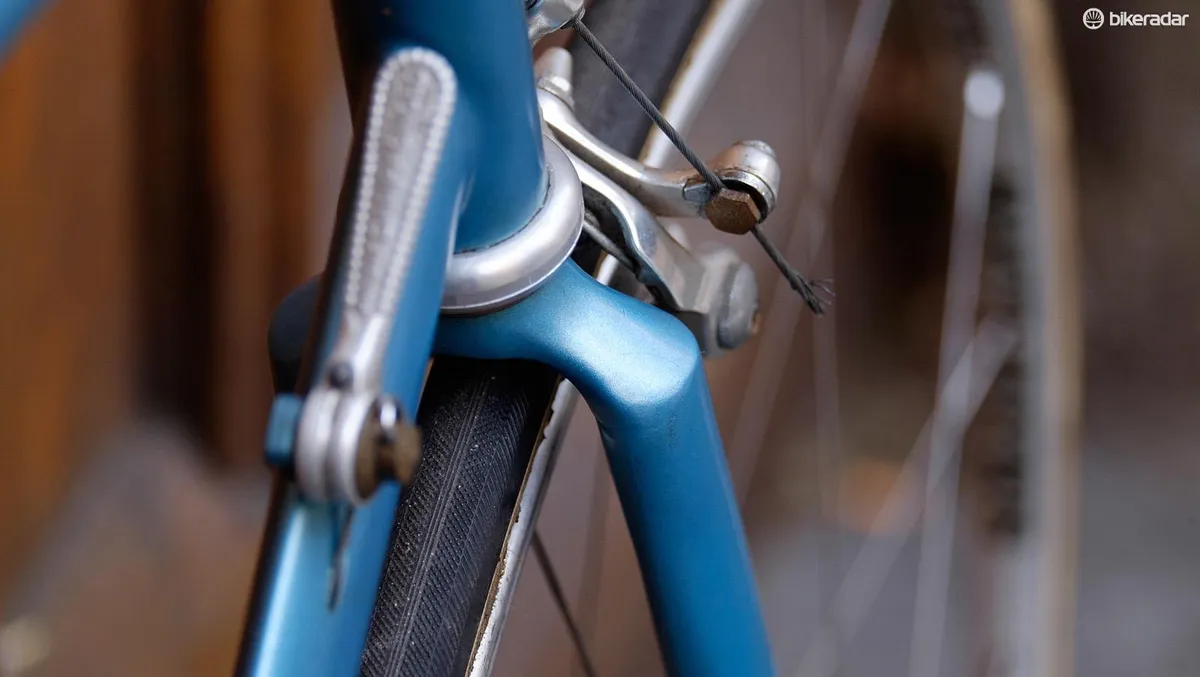
In the same way this guy loves steel dropouts, I’m a sucker for a fork crown. The Riva’s fork is built around a semi-sloping crown that flows beautifully into the subtly oversized blades. These are finished off by a set of handsome, but very simple, cast dropouts.
For how much I love fancy lug work, I’m quite fond of how utilitarian the socketed bottom bracket shell is and think it fits in perfectly with the overall feel of the frame.
The bike has no provisions to mount a bottle cage, clearly indicating the solely go-fast intentions of the Riva.
A subtly brilliant build
The person who commissioned this bike clearly knew their stuff, thoughtfully speccing the bike with a mix of components that presented the very pinnacle of design at the time.
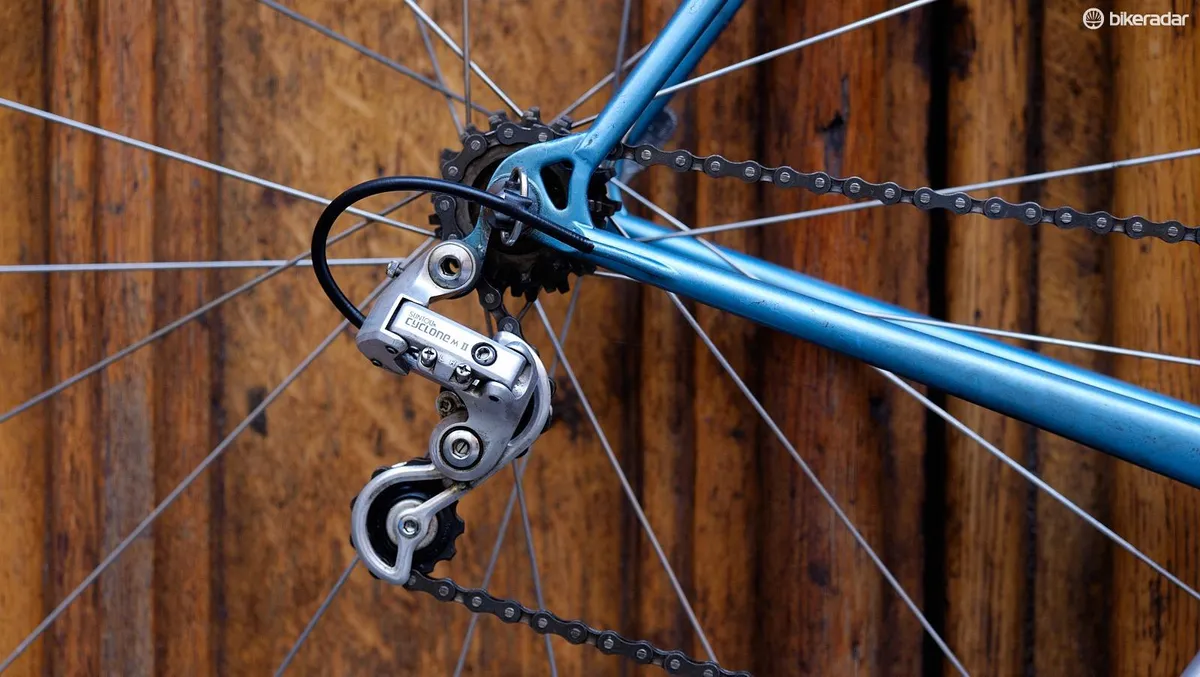
The Suntour Cyclone Mark-II rear derailleur sits in stark contrast to the otherwise largely Campagnolo build.
These days, Suntour is a name most usually associated with low-end drivetrain components, but at the time, the Cyclone Mark-II was one of the very lightest rear derailleurs money could buy. It also included thoroughly modern touches, such as Allen head cable clamp and pulley bolts. You can learn more about this derailleur on Disraeli Gears.
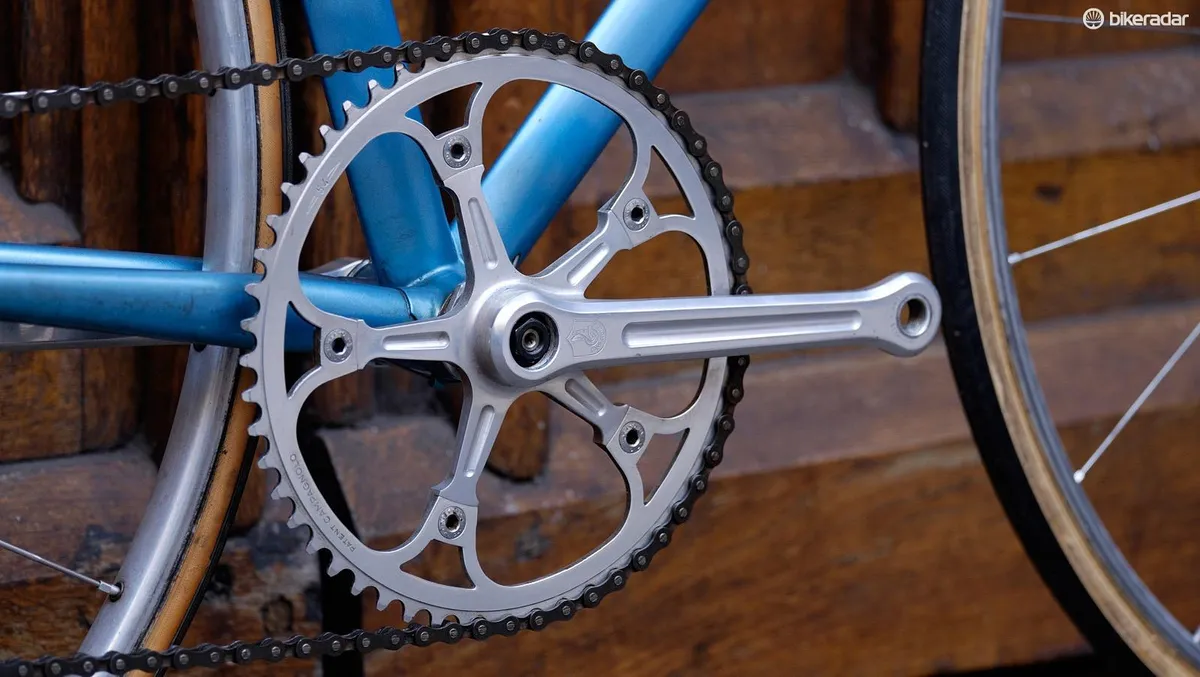
Proving that there really are no new ideas in the cycling industry, the bike is built around a 1x drivetrain, with the owner of the bike pushing a rather large 54t chainring, which is mounted to a fluted Campagnolo Record crankset.
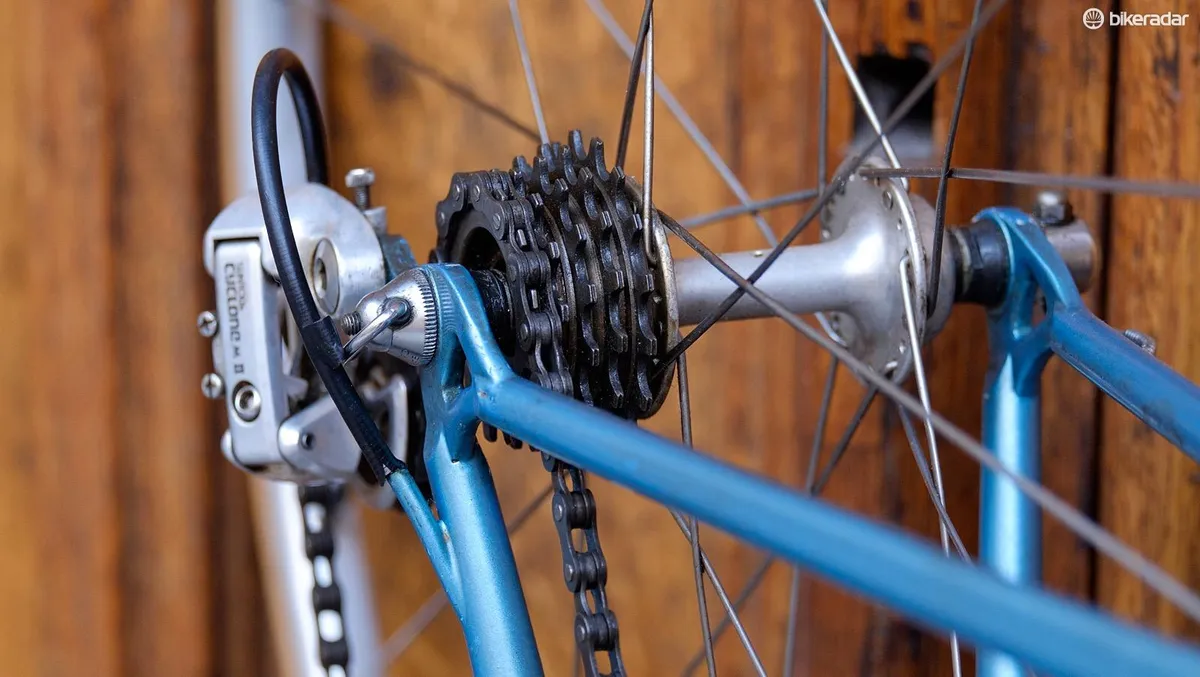
The 5-speed block out back is so ridiculously closely spaced that I suspect most today would probably consider the bike to be pretty much a singlespeed!
I’m fairly certain the brakes are Dia-Compe AC-300G’s. These feature all sorts of early aero-conscious features, such as the domed pivot bolt covers and sculpted brake shoes.
Aero qualities clearly weren’t the only considerations though — the subtly angled entry for the cables makes for incredibly clean routing, with no unnecessarily harsh bends in the cable.
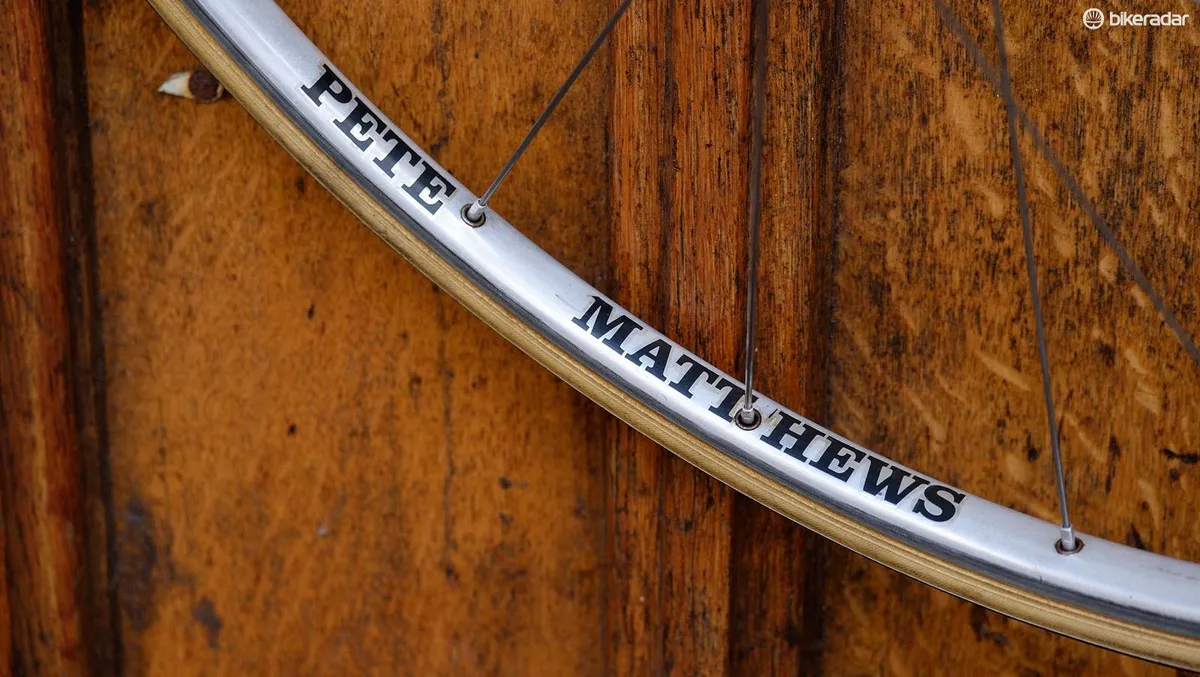
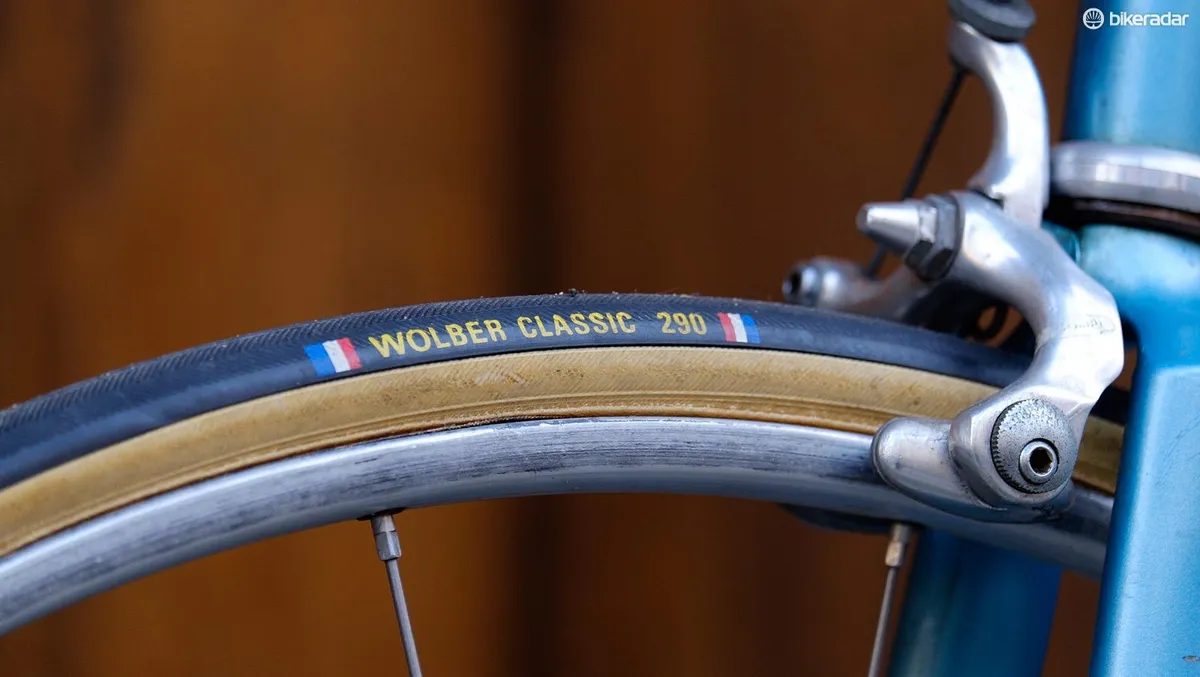
The wheels come from the workshop of the legendary Pete Matthews and are fitted with a set of — what would be considered now — perilously thin 20mm Wolber Classic 290 tubular tyres. Amazingly, these are still holding air!

The front wheel is radially laced with 18 spokes while the rear has 20 in a 2-cross pattern — incredibly low numbers for a bike of this age. I didn’t actually realise until we started editing these photos, but the wheels have been ‘skip-laced’, with every second hole on the Campagnolo Record hubs left empty.
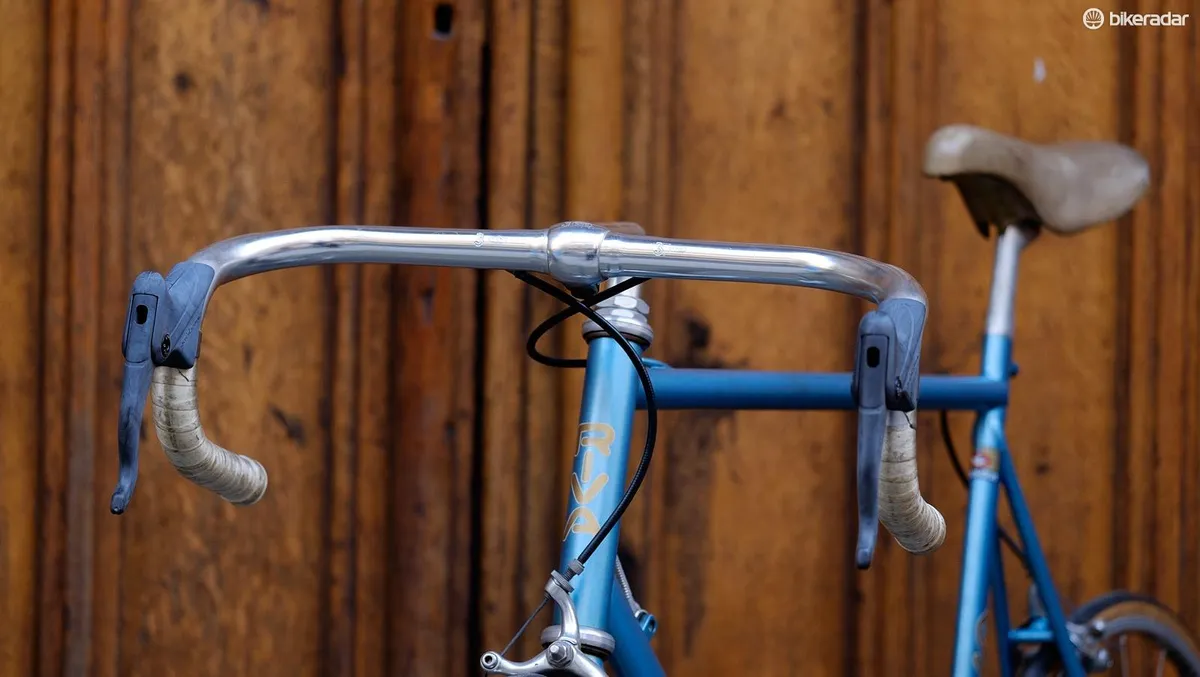
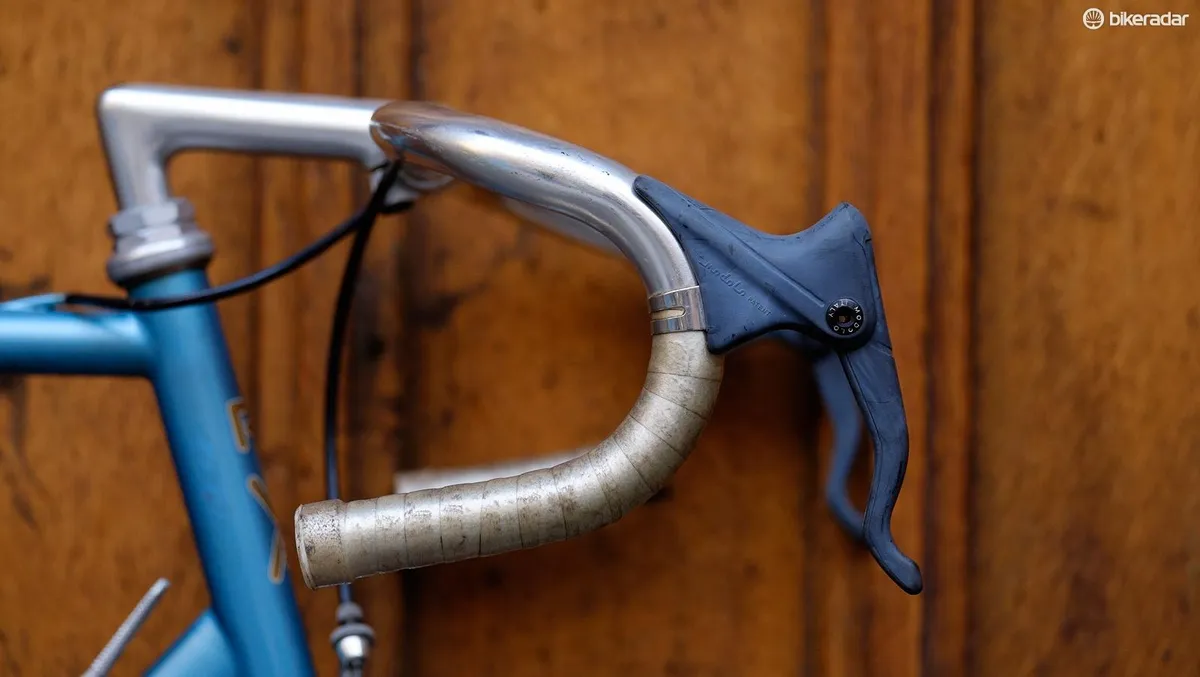
The handsome polished aero cockpit comes courtesy of 3T and is set off by the Modolo brake levers. The way in which the tops of the bars flows into the hoods of the brakes is enough to set the heart of this nerd affluter.
Despite its ferrous construction, the bike as pictured weighs a seriously impressive 7.53kg!
Beautiful like little else
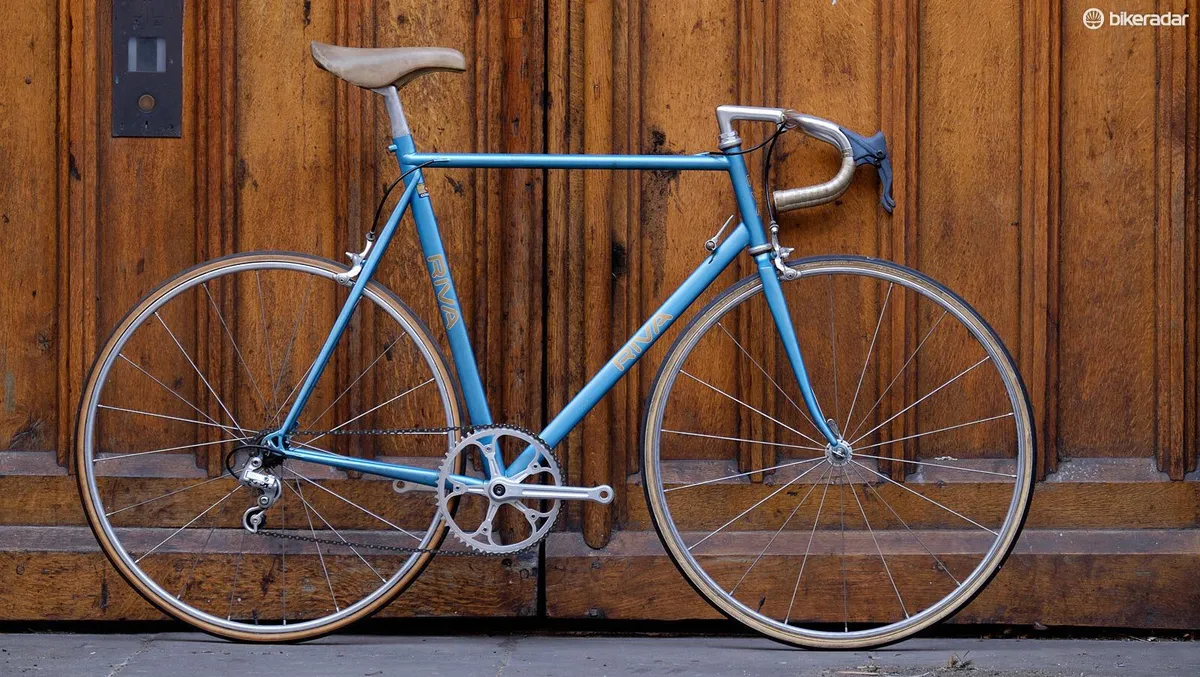
The Riva is beautiful in a way we don’t see often these days — it’s elegant without being precious and integrated without being fussy.
It’s also incredibly clear that the Riva has been designed as a ‘whole system’ — by this I mean that that the frame has been designed around a very specific build and this really shows in how neatly the whole thing comes together.
The phrases ‘hand-crafted’ and ‘cutting-edge’ are no longer synonymous with each other in the bike industry — while I appreciate the latest and greatest carbon go-fast bike as much as the next person, it’s hard not to be nostalgic about the Riva, a relic of a time where paying a person in a dusty shed to hand build you a bike would still allow you access to the very pinnacle of technology.
Where can I buy this beautiful bike?
The bike is currently for sale at Bens Cycle Workshop in Bristol. You can get in touch with the shop here.
